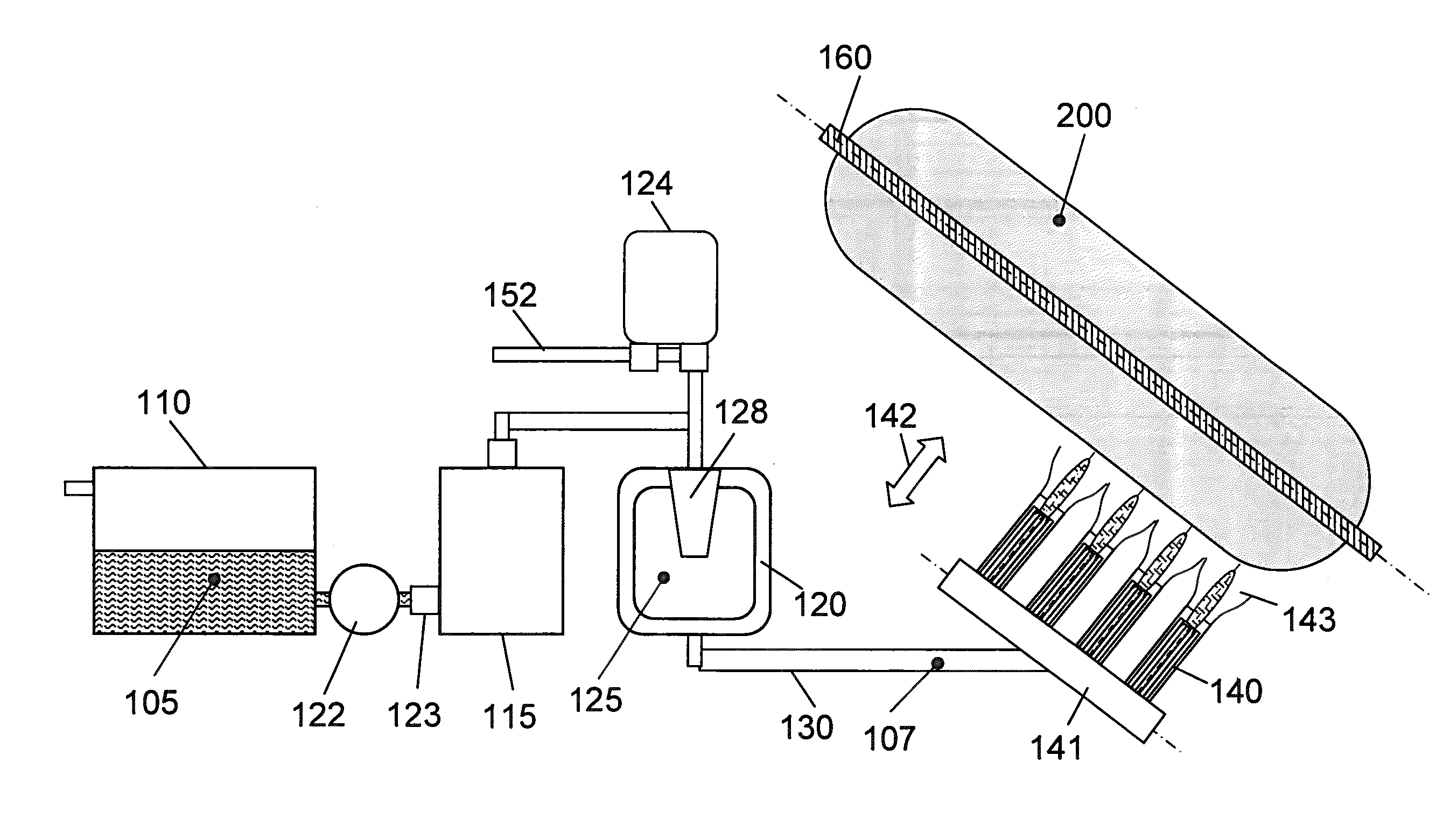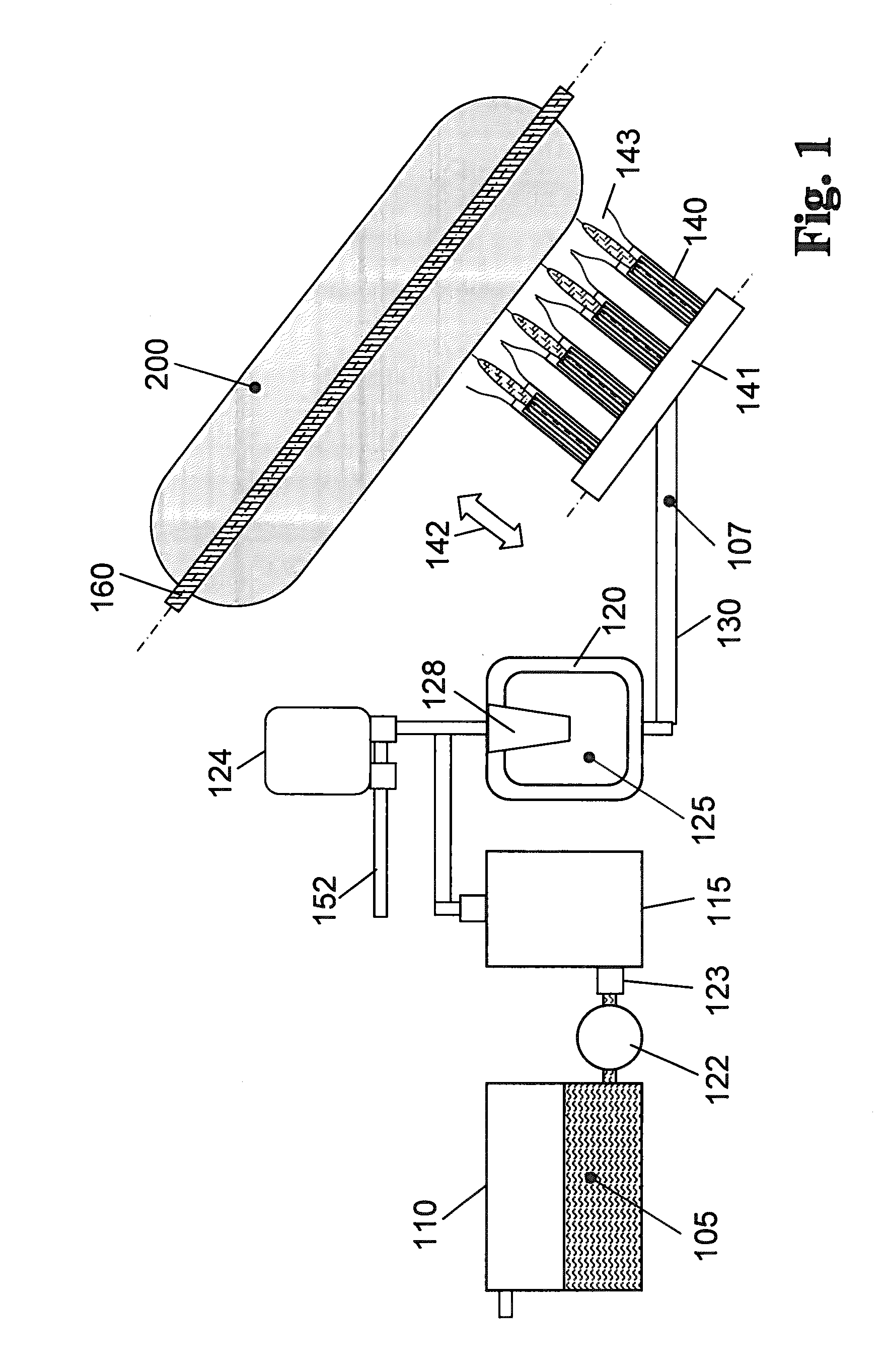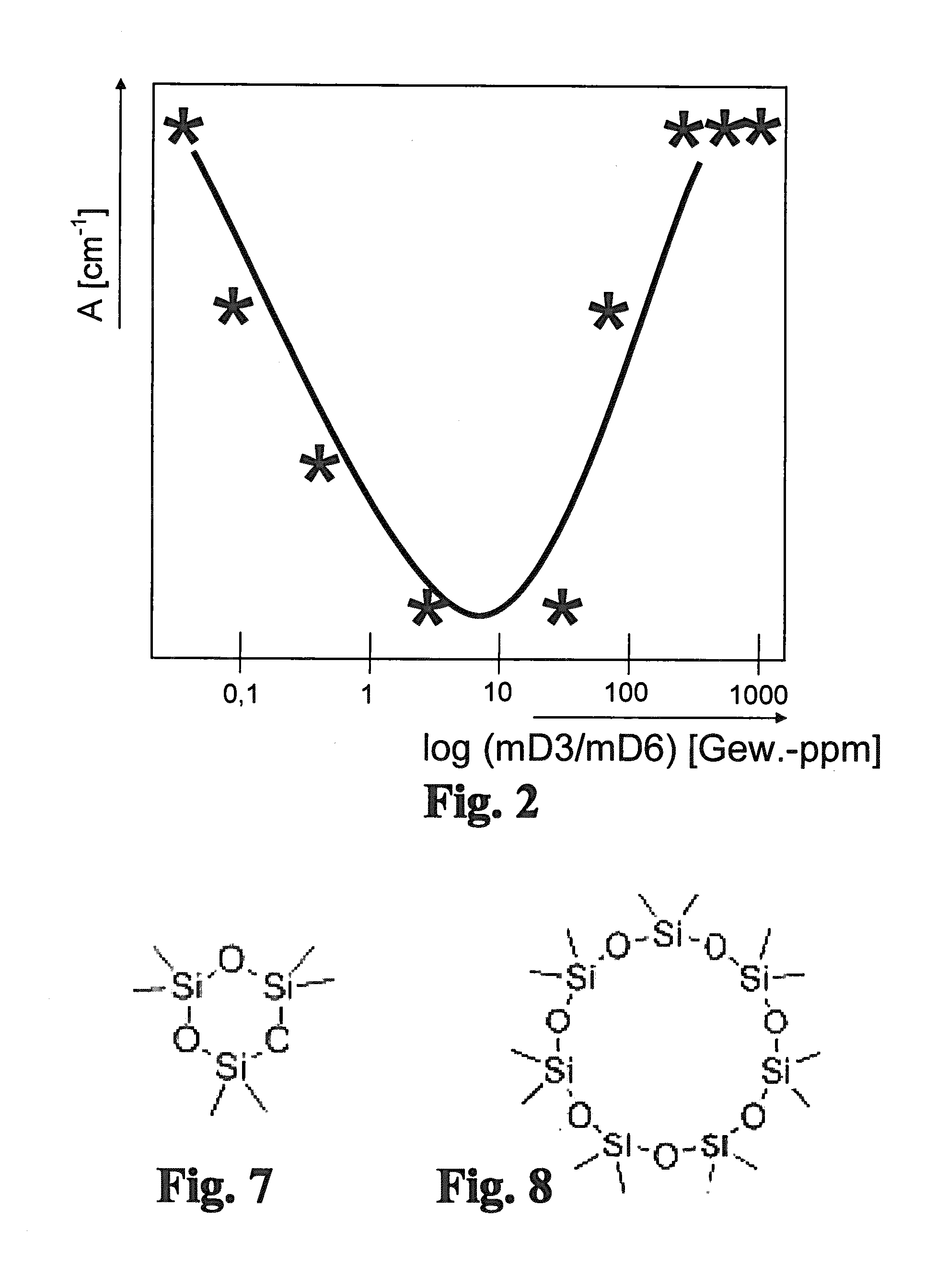Method for producing synthetic quartz glass
a technology of synthetic quartz glass and quartz glass, which is applied in the direction of glass deposition burners, glass making apparatus, glass shaping apparatus, etc., can solve the problems of high cost of flue gas scrubbing and disposal, and high cost of hydrochloric acid scrubbing and disposal. , to achieve the effect of reducing the cost of d4 purification, the process of distillation is time-consuming and expensiv
- Summary
- Abstract
- Description
- Claims
- Application Information
AI Technical Summary
Benefits of technology
Problems solved by technology
Method used
Image
Examples
Embodiment Construction
[0092]The invention will now be explained in more detail with reference to embodiments and a drawing, in which:
[0093]FIG. 1 shows a device for performing the method according to the invention for producing a SiO2 soot body, in a schematic illustration;
[0094]FIG. 2 shows a diagram regarding the layer density in soot bodies in dependence upon the composition of the feedstock material;
[0095]FIG. 3 is a CT image of a soot tube produced according to the invention by using a feedstock material from different polyalkylsiloxanes, in a view taken in the direction of the longitudinal axis of the soot tube;
[0096]FIG. 4 shows, by way of comparison, a CT image of a SiO2 soot tube produced on the basis of the prior art by using a pure octamethylcyclotetrasiloxane as feedstock material;
[0097]FIG. 5 is a schematic diagram showing the various elements of the quartz-glass producing system according to the invention;
[0098]FIG. 6 is a schematic illustration of a vaporization chamber;
[0099]FIG. 7 shows ...
PUM
| Property | Measurement | Unit |
|---|---|---|
| Temperature | aaaaa | aaaaa |
| Temperature | aaaaa | aaaaa |
| Length | aaaaa | aaaaa |
Abstract
Description
Claims
Application Information
 Login to View More
Login to View More - R&D
- Intellectual Property
- Life Sciences
- Materials
- Tech Scout
- Unparalleled Data Quality
- Higher Quality Content
- 60% Fewer Hallucinations
Browse by: Latest US Patents, China's latest patents, Technical Efficacy Thesaurus, Application Domain, Technology Topic, Popular Technical Reports.
© 2025 PatSnap. All rights reserved.Legal|Privacy policy|Modern Slavery Act Transparency Statement|Sitemap|About US| Contact US: help@patsnap.com



